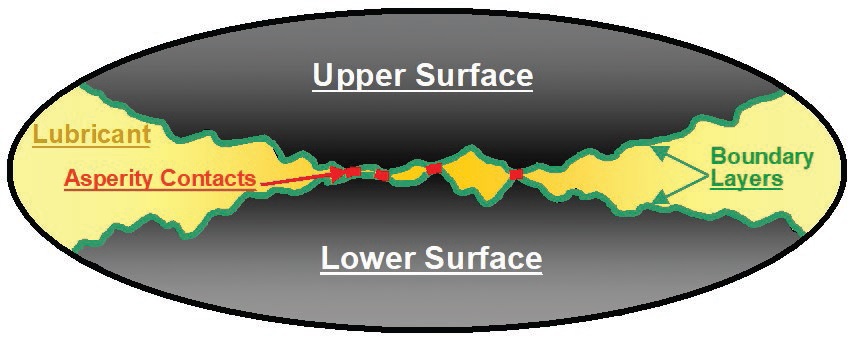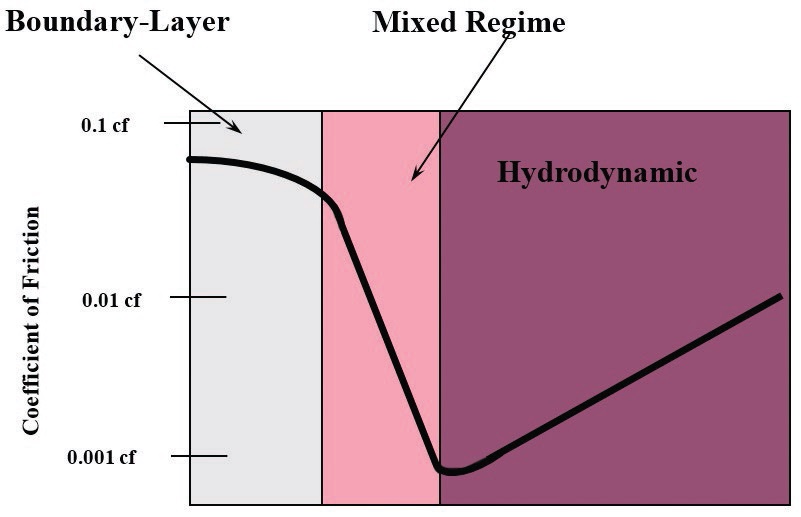What’s a friction modifier?
Dr. Robert M. Gresham, Contributing Editor | TLT Lubrication Fundamentals December 2017
These antiwear agents play a critical role in smoothing the transition from static to dynamic motion in moving parts.
WHEN I FIRST ENTERED THE LUBRICANTS BUSINESS, I was always a little mystified by so-called friction modifiers. This mystification was further intensified when people said these products added lubricity or were “lubricious.” Finally, I heard from people who said that while you can’t really measure this ethereal property, you can feel it between your fingers.
Let’s take a look.
Friction modifiers originally came into use for applications like limited slip gear oils, slideway lubricants, automatic transmission fluids and multi-purpose tractor fluids. The idea of the friction modifier was to smooth the transition from static to dynamic motion in moving parts. Thus, when one thinks of the lubrication regimes, friction modifiers ease the transition through boundary and mixed to the hydrodynamic regime.
As we know, there also are antiwear/extreme pressure additives (AW/EP). People sometimes confuse the two, but in fact they are quite different. AW/EP additives chemically react with the surface of the metal, forming a relatively durable film that is difficult to shear off (
see Figure 1). This reaction takes place when there is sufficient heat in the system, usually during the mixed-lubrication regime, to activate the additive. The resultant films also are very useful for protecting the metal under boundary conditions, but they exhibit relatively high coefficients of friction.
 Figure 1. AW/EP additives work by chemically reacting with the metal’s surface to form a relatively durable film that’s difficult to shear off.
Figure 1. AW/EP additives work by chemically reacting with the metal’s surface to form a relatively durable film that’s difficult to shear off.
The films formed by friction modifiers are by contrast formed at essentially room temperature via hydrogen bonds to the surface and van der Waals forces between molecules. The friction modifiers typically have polar heads and hydrocarbon tails that aggregate on the surface of metals in clustered and layered matrices of relatively straight molecules perpendicular to the metal surface (
see Figure 2). This leads to a soft, lubricious film of low coefficient. These films are difficult to compress, good for boundary and mixed regimes, easy to shear and good for smooth, easy start-up from static to dynamic conditions.
 Figure 2. The effectiveness of friction modifiers depends on several factors, including nature of the polar head and surface temperature.
Figure 2. The effectiveness of friction modifiers depends on several factors, including nature of the polar head and surface temperature.
Without getting into the chemistry too much, the effectiveness of friction modifier films depends on the nature of the polar head, the chain length of the hydrocarbon tail, the nature of the chain (that is, how well it packs together with its neighbor) and the temperature, which tends to weaken the various bonds as it increases. Thus, we can see how friction modifiers and AW/EP additives actually can work in tandem to protect and reduce friction over a wide temperature range, from ambient temperature start-up to a much warmer operating temperature. In practice, friction modifiers are long chain (C-18) amides or partial esters such as a long chain (C-18) glycerol. (It’s this soap-like structure that accounts for the perception of “lubriciousness” when rubbed between the fingers.)
These friction modifier films are vulnerable to high temperatures, other additives that compete for metal surface molecules, insufficient concentration of the friction modifier resulting in incomplete films, contaminants that also might compete for the surface and the chemistry of the metal itself, which can affect viability of film forming.
As mentioned at the beginning, friction modifiers are used in limited slip gear oils, slideway lubricants, automatic transmission fluids and multi-purpose tractor fluids. However, today we also are seeing friction modifiers used in automotive engine oils to improve fuel efficiency to help meet CAFE standards.
I mentioned above that you can’t really measure lubricity, but the efficacy of different friction modifiers can be determined with some rigorous lab work. What’s done is to measure the Stribeck curve for a given engine oil but with differing friction modifiers in the formulation. The curve that demonstrates the lowest coefficient of friction, from static to dynamic motion and from boundary regime through mixed to hydrodynamic, is likely the best product (
see Figure 3). Wear through the regimes also can be measured.
 Figure 3. Friction modifiers affect a lubricant’s coefficient of friction. The lubricant demonstrating the lowest coefficient of friction through the various boundary regimes is likely the best choice.
Figure 3. Friction modifiers affect a lubricant’s coefficient of friction. The lubricant demonstrating the lowest coefficient of friction through the various boundary regimes is likely the best choice.
I hope friction modifiers no longer seem quite so mystical now.
 Bob Gresham is STLE’s director of professional development. You can reach him at rgresham@stle.org
Bob Gresham is STLE’s director of professional development. You can reach him at rgresham@stle.org.